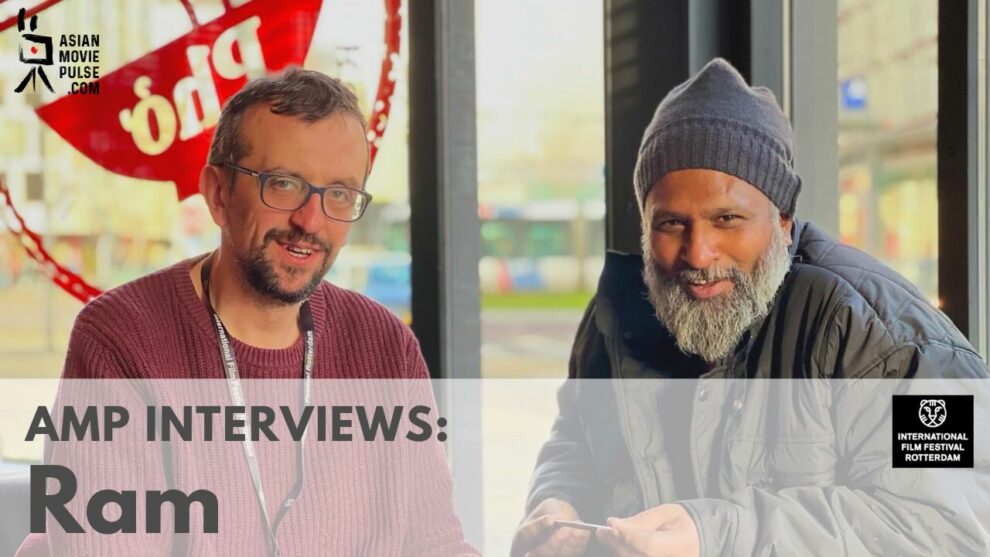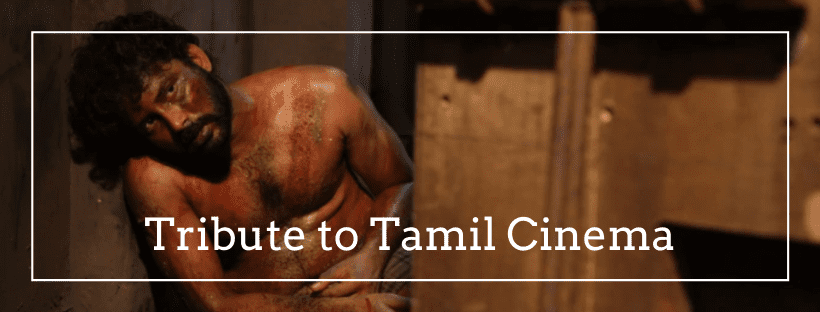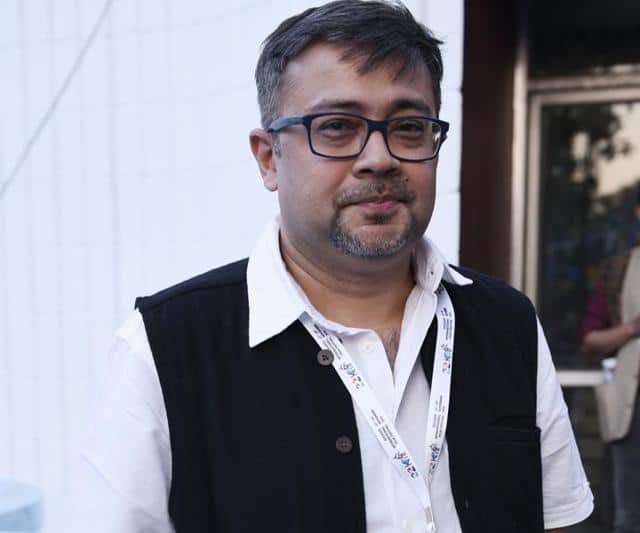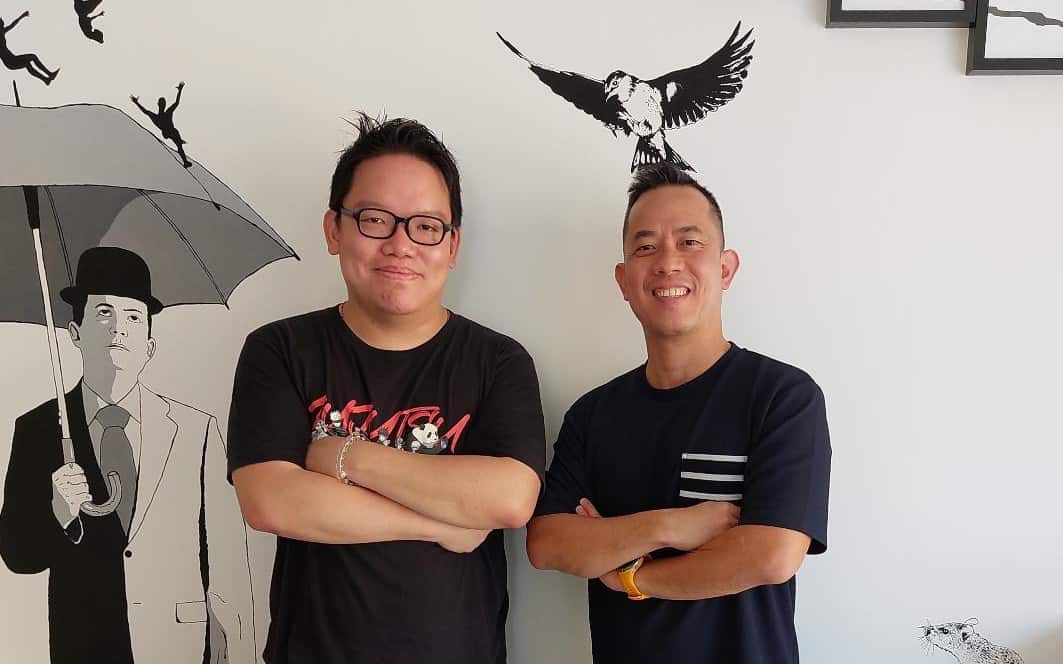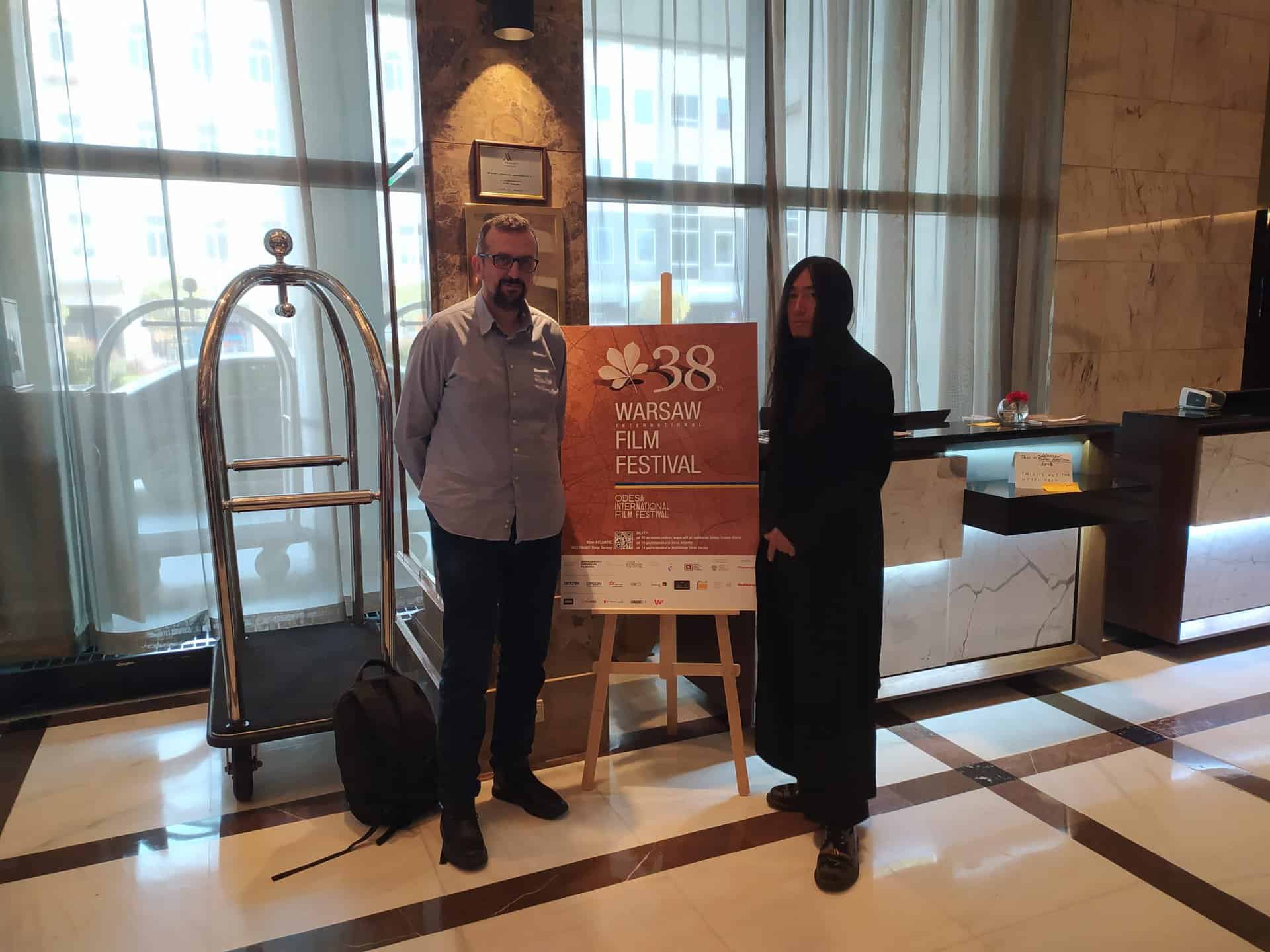RAM is an Indian filmmaker and actor, who has been working in Tamil cinema since 2007. He studied Tamil literature at the Madras Christian College and also started writing short stories himself. His debut film Tamil M.A. was released in 2007, followed by Gold Fish in 2013, for which he won several awards. His critically acclaimed film Resurrection premiered at IFFR 2018 where he was also part of a panel discussion on Tamil cinema.
On the occasion of his latest film, “Seven Seas Seven Hills” screening at International Film Festival Rotterdam, we speak with about the inspiration behind the story and the immortal character, shooting inside a train, the mouse, acting and action scenes, the Tamil movie industry and other topics.
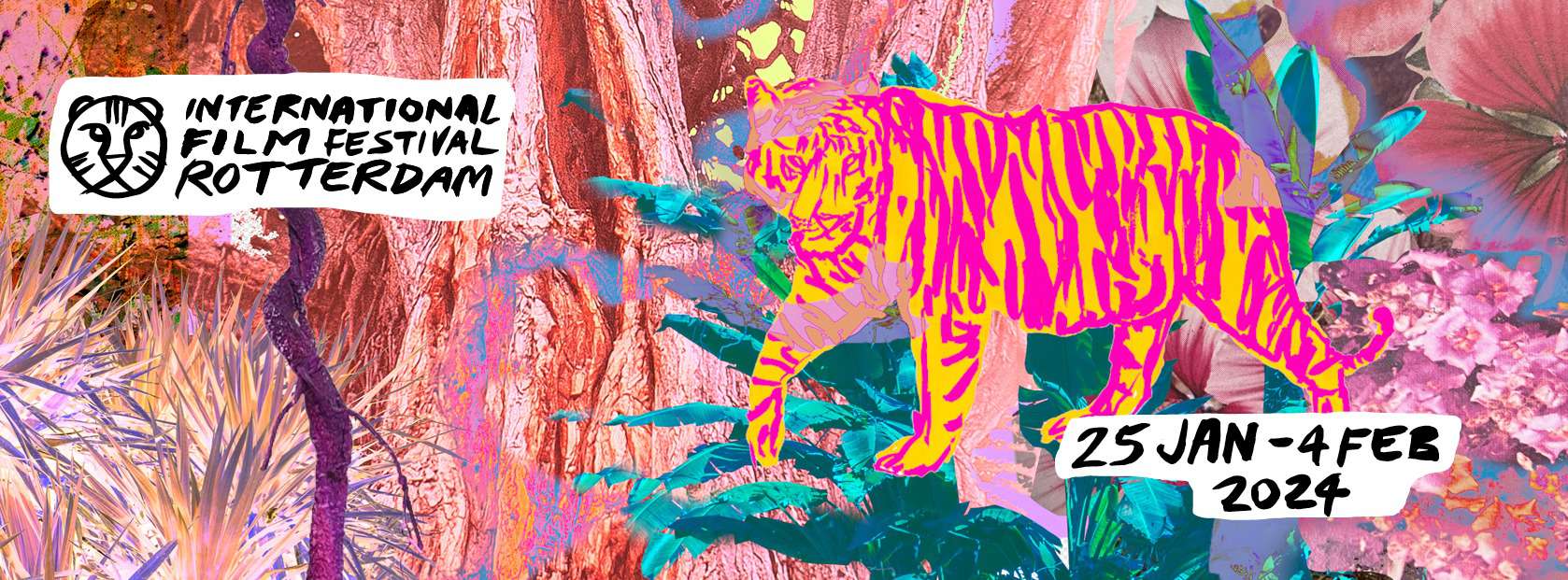
What was the inspiration behind this crazy story?
Not exactly the same, but something happened in my life when I was in college. I watched a late movie and then took a local train to go back to my college. One guy was there before I got into the station. And at some point, he was trying to push me off the train, for no reason. Next station I got out and ran. That stuck in my mind, why somebody unknown to me tried to push me off the train? This stuck in my mind since I was 23, and later on I thought that maybe it was a psychological issue or he was offended by what I was wearing or maybe some person who looked like me did something to him. From there, all these things started, but it is not directly connected to the story, it is where the plot started from.
Why is the protagonist immortal?
I wanted to do a fantasy film and I am a litigious student. I did my masters in Tamil literature and I studied all those folk tales, fantasy stories etc. I wanted to create a world to my convenience and my budget, do something that gives me pleasure on the spot. There was a thrill to make this film. I don't want my movies to be the same, I want to do something different each time because otherwise I get bored. If I make a fast movie with many punchlines, I know the audience will clap in the theater. But that thrill is over, it has already happened to me. Next movie was dramatic, made people cry, the next one was satirical, the next one very spiritual, so for my fifth movie, I did not know what to do. So I thought about getting into the fantasy world, the surreal world. And I can learn new techniques in filmmaking, like post production on the CG, how to create the wind, the ocean, etc. Now my son is 9 years old and the last 2-3 years I am used to him telling me many fantasy stories which he likes, so maybe he was my inspiration also.
Why inside the train though?
Because I love trains and hate buses. Trains are democratic. When I was growing up in Kerala, the trains were really beautiful and in my actual life, I have a lot of emotions connected to the train: about my grandfather, about my love stories, about people I met. I have met a lot of people. The train is like a kaleidoscope for India, if you are in a compartment train for two nights, you will experience 23 languages, 23 different types of food, 23 varieties of culture. Train is always fascinating to me, and that is the reason that there is a train in all my movies, except for a few. But in this movie, I chose to use the train as a box. I chose to put the things that I want inside this box, I am doing this kaleidoscope. It is my compartment and I put inside the people that I want. Not one train in India runs with so much light, but this one does because I want to show that this is my train. It is my stage, it is more like a theater. It is a tiny space with only two characters, but with a kinetic speed, which is how the story is moving forward. If I had put them inside a room, it would have been stagnant. But if the room is moving, it is a train, then the whole thing becomes something completely different.
Check the review of the film
Was it difficult shooting in just one wagon?
Actually the whole thing is a single set, because everything is CG, lights are CG, windows are CG, except the wagon and the characters. We shot everything in a green background. I can do a lot of things in that regard, we can put the train at whatever speed we wanted, if we wanted to shake the train we would all jump on the train and try to create a shake. In the same way, I can use the light. I felt the whole thing was really thrilling, I was very excited working on a set because we could do whatever we wanted, to perfection. All my other movies are shot in real locations, and then nature has command over you. But in this case, I didn't need the mercy of nature, just the mercy of the people who worked with me, in order to get what I want.
Why did you put the story also outside of the train, why not keep it only there?
I believe if someone is immortal he would carry a lot more guilt and agony within him than a normal person. This lead me to the idea of search for his eternal love and an act which would overcome his guilt. I had two episodes outside the train involving the encounter with his eternal love and search for her. And it was needed to be depicted as both the episodes have a connection with his guilt.
And regarding the inclusion of the mouse in the movie, because I thought the main story is actually a cat-and-mouse game but you also included a mouse?
At first, we created a theme involving two characters, and then we thought who else could be in the train. So we put one rat inside. So the concept is that we cannot understand that the space we are occupying belongs to other beings also, that is the conflict. So the rat comes in in order to create this conflict and create drama and to present my thesis, what I want to convey through this movie. Without the rat, I could not do this film.
What about the kid that appears?
The kid, the rat and even the guy who catches the rat are the same, he also had a bad childhood, his father also tortured the kid. In the beginning, the story is narrated to a kid that has no home. In a way, this movie is about homeless people. When the rat is revealed to also have babies the film shows that they are given milk. So if animals can do that, why can't humans do it like that. Nature says if a baby needs milk, give them milk, it does not say that the mother can only give milk. I have a very strong conviction that this world is very beautiful and everybody is very good; the problem is that they are not good to everybody, but they are good to someone. Because most of the time, people don't have the luxury of being good to everybody.
Do you like the characters in the film, would you like to have a drink with them you think?
(laughs) The protagonist seems to be suffering, but he is not suffering actually, the Immortal man is the one who is suffering, and the protagonist is actually causing the suffering. The Immortal looks violent, but he is not actually violent, the normal man is actually violent. I feel that everybody has the potential to hurt someone, maybe with words, maybe with actions but after a few drinks, everyone is equal, no race, no caste, no religion. So yes, I would go for drinks with them. How about you?
I would go with the Immortal (Ram laughs)
How did the casting work for the film?
Nivin Pauly is from Kerala, he is a Malayalam actor, and I like him from his first film. We knew each other for several years and after my last movie he called me and told me he wanted to do a movie with me. Then when this film with the Immortal came up, I thought he could fit the bill, because he can do humor, he can do romance, he can do action, is very versatile and very comfortable to work with, he has no ego. Soori is a comedian actor in Tamil so I wanted a normal man to be a comedian, because comedy actually moves the story. And Anjali has been there since my first movie. I introduced her and If I ask her to fall from a tree she will just fall from the tree, and she will say she did it because the director asked for it. I took advantage of that because I call every time there is a risky thing to do, because I know she will do it. I take the safety measures and everything but she will not complain in any way to me. I have known her since the age of 16, she is like my elder daughter. These three people are emotionally connected with me. I know them really well as human beings and their backstories so it gives me confidence to exact the performances I want from them.
Do you allow improvisation?
Yes!. I have a script, but the script is there just to guide us, but I never use the same dialogue I have written before. Every day is new to me, I am worried about every day. Every day should be interesting and fast and crazy, otherwise I will get bored. Something new should come, I am not saying it has to be extraordinary but we should all feel that we are creating something. That is why I am enjoying the shooting so much, and improvisation is definitely a part of it. I tell the story to my whole crew, even the assistants, they also know the dialogues so they are emotionally with me, and at the same time, it allows a creativity within me, which definitely helps. When you are working with a low budget, you need this kind of support
Is this a low budget movie?
It is about 15 crores ($1.8 million), which is a low budget for our mainstream cinema. But for this movie, if I paid my actors really well, the budget would double.
Tell me a bit about the final scene, where the Immortal beats the policemen to a pulp.
In the end, I feel that the police are the symbol of the state, so he is punishing the state essentially. The action choreographer, Silva, did a real good job, and all the policemen involved are actually professional fighters.
How many takes did it take?
It took a whole day. If I had more money I would have shot it in three days, but I had to do it in one day.
Which was the most difficult scene to shoot?
The rat. How to come, when to come, sometimes real rat, sometimes CGI, sometimes puppetry in the way his fingers move, we had a rat trainer who would act and show how a rat behaves and then we had to shoot it like that. Apart from that, the shooting was not that tough actually.
How would you describe Tamil cinema at the moment?
I am really happy that nowadays people come to know Indian cinema apart from Hindi cinema, a lot of South India cinema like Tamil and Malayalam. Tamil cinema is different, even from the other South Indian cinemas. Now Tamil cinema is evolving like never before, the world should look at Tamil cinema now. We are here to tell new stories, in our way, not to follow the European type of structure. I believe that every region should have their own film structure. Five years ago, we were trying to match European cinema, we were thinking how to make films like that. Now we want to make movies like us, what we want and if the world likes our movies it is fine. And filmmaking has become more democratic, since we can now do more independent movies with less budget. A lot of movies are even coming from rural parts of Tamil Nadu and this seems to help the film organically. I feel that, in another five years, we would come up with a different genre for the world to watch.
And future projects, what are you working on next?
I just completed the shooting of my next film tentatively titled Fly Away” Unlike my other films, it's a feel-good humor film. The story revolves around a middle class couple and their kid. I found an extraordinary actor in the form of ‘Mirchi' Shiva who plays the male lead alongside an incredible actress from Kerala – Grace Antony and I am extremely happy about it and the way the movie has shaped up.


